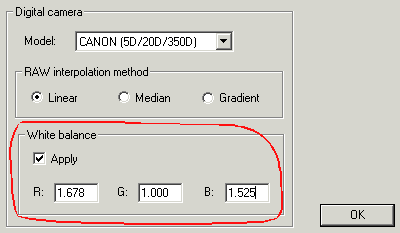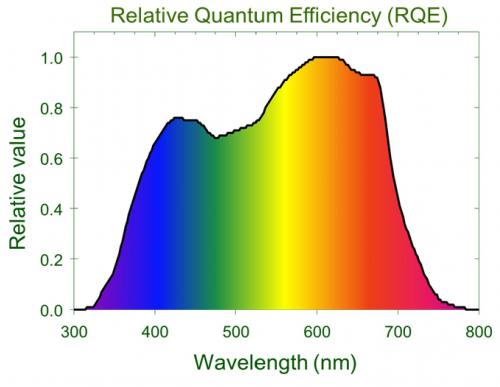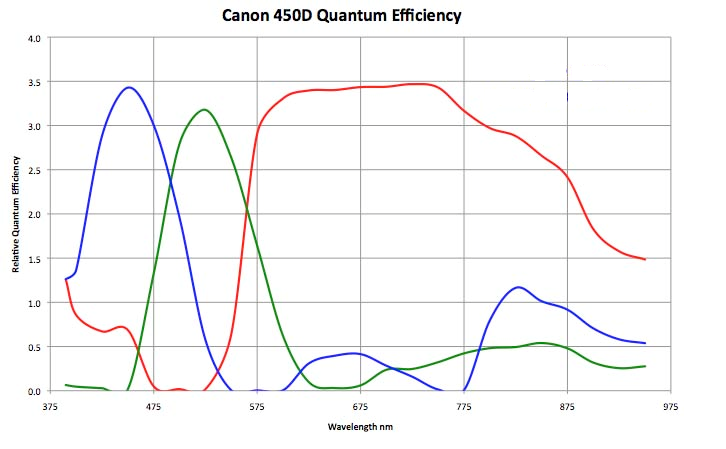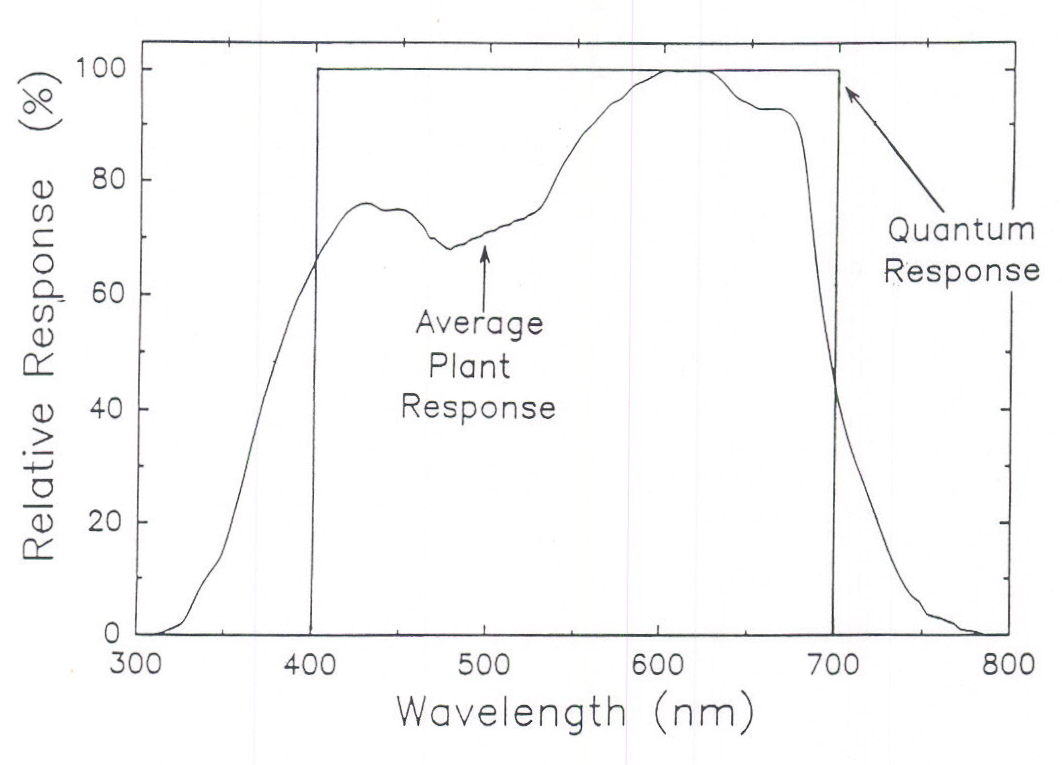I'm still unpacking lab gear and found some T5 lamps. As a lark, I checked PUR with the Seneye device and found a cool white to rate at 60% and an actinic at 82%. If Photosynthetic Photon Flux Density (or PAR, if you will) are the same, we can develop a hypothesis that the actinic lamps are 22% more efficient. The most efficient LED I've seen is in an Orphek Atlantik luminaire and it rated 87%.
Navigation
Install the app
How to install the app on iOS
Follow along with the video below to see how to install our site as a web app on your home screen.
Note: This feature may not be available in some browsers.
More options
You are using an out of date browser. It may not display this or other websites correctly.
You should upgrade or use an alternative browser.
You should upgrade or use an alternative browser.
T5 Photosynthetically Usable Radiation (PUR) Ratings
- Thread starter Dana Riddle
- Start date
- Tagged users None
I should add that I will develop PUR ratings on LEDs, fluorescents, and metal halides. Of course, the results will raise all sorts of questions, as tests of these type always do. But we'll wade through it together. 
Does the device factor in the higher energy at lower wavelengths? If so, then the high-300 and low-400 nm waves from the Actinic should well beat out Cool White which has less of these and more of the lower-energy waves. Just curious about the meter. Which Seneye are you using?
It's the Seneye Reef. Matt at Seneye tells me the device looks at ratios/intensity of red, green, and blue wavelengths. Simple intensity works fine since photon energy isn't a factor in photosynthesis.Does the device factor in the higher energy at lower wavelengths? If so, then the high-300 and low-400 nm waves from the Actinic should well beat out Cool White which has less of these and more of the lower-energy waves. Just curious about the meter. Which Seneye are you using?
Let me clarify that statement - a red photon promotes photosynthesis as much as a blue photon can.It's the Seneye Reef. Matt at Seneye tells me the device looks at ratios/intensity of red, green, and blue wavelengths. Simple intensity works fine since photon energy isn't a factor in photosynthesis.
- Joined
- Sep 18, 2017
- Messages
- 5,594
- Reaction score
- 3,444
Well faster photons (blue) get missed a wee bit more than slower moving photons but I think that is a bit more academic..and prob. changes w/ species as well.Let me clarify that statement - a red photon promotes photosynthesis as much as a blue photon can.
It dis-favors blue photons a bit..Think that is "part" of the below, along w/ just supply train efficiency..
I'd need to check that a bit..
Bottom line is there are already enough sampling errors to make this "information" practically useless..
Same reason silicone photo detectors are "bad" w/ blue.. buzzes right through or bounces or gets loose ..
At least that's the simplistic explanation I believe..
https://depts.washington.edu/mictech/optics/me557/detector.pdf
Cameras have the same issue.. R abd B are not efficiently captured in this case sooo you need to take the analog output and multiply it by
a correction factor to make up for lost (undersampled) photons:
this case red is slig. less efficient than blue.

Average terrestrial photosynthetic quantum efficiency..

Once the photon is absorbed, its energy level is inconsequential. Kirk (2000; Light and Photosynthesis in Aquatic Ecosystems) states this - the amount of energy required to promote photosynthesis can be supplied by a red photon. The excess energy of a blue photon (beyond that required to raise the excitation state) is dissipated.
I get your point about white balance in a camera. I suggest you contact Matt at Seneye and express your concerns.
I get your point about white balance in a camera. I suggest you contact Matt at Seneye and express your concerns.
Let me see if I have one of those in inventory. Still unpacking. And thanks!Can you test the ATI Coral Plus bulb please?
Interested to see the different LED and comparisons to Halide.
Thanks for the work!
Todd
- Joined
- Sep 18, 2017
- Messages
- 5,594
- Reaction score
- 3,444
Once the photon is absorbed, its energy level is inconsequential. Kirk (2000; Light and Photosynthesis in Aquatic Ecosystems) states this - the amount of energy required to promote photosynthesis can be supplied by a red photon. The excess energy of a blue photon (beyond that required to raise the excitation state) is dissipated.
I get your point about white balance in a camera. I suggest you contact Matt at Seneye and express your concerns.
Naah the simple RGB sensor they use has enough errors already..not any different than a camera sensor that technically is rgbgrgbg and millions of pixels.
Filter efficiencies and overlap ect. Sure they got a handle on that part.

My point was wasn't after it's captured really though I'm pretty sure there is some of that (as reflected in the green dip ) .. It's statistical probability prior to capture..
I don't KNOW the exact whole story but part of it includes the above..
Seneye is a nice and fairly efficient PAR meter (like an apogee) and is proven in real life.
As to the rest PUR Kelvin I have my doubts..
As to contacting Seneye I have.. twice regarding 2 seperate questions..
They never responded back...
This was one about a month ago:
This was a year ago:A question came up regarding using the seneye out of water.
Granted an off box use but the issue has come up.
most PAR meters are corrected for in water (apogree 1.08 or 1.32 approx, depending on class of sensor).
I've personally tried seeing a difference using a LUX meter and a Seneye out of water.
Granted using this and a conversion factor to translate the LUX to PAR has it's own errors.
Getting back to the question:
Have you noted or do you "correct" for immersion w/ your technology (sensor and light path)?
would out of water PAR measurements be fairly accurate (like within 10%)?
Thanks,
Jeff
I've come to the conclusion that something may be amiss w/ your LUX calculations.. or there is something I'm missing..
for a few years now most 'internet" studies have concluded (in multiple trials) that a LUX to PAR conversion factor is in the ranges of 50-70
Your PAR to LUX conversion is on the range of 37....
Like this:
211 PAR 7810 LUX 7810/211 = 37
historically one of those numbers is wrong and since PAR seems to have been checked to be accurate.. must be LUX.
http://www.reefcentral.com/forums/showthread.php?t=2626700&highlight=seneye
PAR @ 211 should come out to like 10,550..
Another terrestial example..
https://www.apogeeinstruments.com/conversion-ppf-to-lux/
"Multiply the PPFD by the conversion factor to get Lux. For example, full sunlight is 2000 µmol m-2 s-1 or 108,000 Lux (2000 ∗ 54)."
Range is like 50-80 X PAR = LUX..
since nobody uses LUX the subject is mostly "scientific"..and checking w/ FW LED's in the 4000k-6500k range doesn't change the "error"..
Constructive criticism..
And, while I'm asking questions.. how do you do a spectral analysis?
My guess is a simple RGB interpolation.. was hoping on a linear CMOS and diffraction grating.. but at this price point, beggars can't be choosers..
Just begun to use it so I do have somewhat of a learning curve here.
Thanks for listening,
Sincerely,
Jeff
None of this has anything to do w/ what you are doing more than as a simple FYI...
PleaseWell faster photons (blue) get missed a wee bit more than slower moving photons but I think that is a bit more academic..and prob. changes w/ species as well.
It dis-favors blue photons a bit..Think that is "part" of the below, along w/ just supply train efficiency..
I'd need to check that a bit..
Bottom line is there are already enough sampling errors to make this "information" practically useless..
Same reason silicone photo detectors are "bad" w/ blue.. buzzes right through or bounces or gets loose ..
At least that's the simplistic explanation I believe..
https://depts.washington.edu/mictech/optics/me557/detector.pdf
Cameras have the same issue.. R abd B are not efficiently captured in this case sooo you need to take the analog output and multiply it by
a correction factor to make up for lost (undersampled) photons:
this case red is slig. less efficient than blue.

Average terrestrial photosynthetic quantum efficiency..

But how do you know they haven't applied corrections? Proof of absence is not absence of proof- please let us know how Seneye has replied.
- Joined
- Sep 18, 2017
- Messages
- 5,594
- Reaction score
- 3,444
Every time I had a technical question regarding it they never replied.. Why would I waste more of my time..But how do you know they haven't applied corrections? Proof of absence is not absence of proof- please let us know how Seneye has replied.
Absence of proof is not proof of absence.
- Joined
- Sep 18, 2017
- Messages
- 5,594
- Reaction score
- 3,444
Work in progress..Please
Red and blue phtons move at the same speed under the same conditions. They only differ in wavelength and energy levels.Well faster photons (blue) get missed a wee bit more than slower moving photons but I think that is a bit more academic..and prob. changes w/ species as well.
It dis-favors blue photons a bit..Think that is "part" of the below, along w/ just supply train efficiency..
I'd need to check that a bit..
Bottom line is there are already enough sampling errors to make this "information" practically useless..
Same reason silicone photo detectors are "bad" w/ blue.. buzzes right through or bounces or gets loose ..
At least that's the simplistic explanation I believe..
https://depts.washington.edu/mictech/optics/me557/detector.pdf
Cameras have the same issue.. R abd B are not efficiently captured in this case sooo you need to take the analog output and multiply it by
a correction factor to make up for lost (undersampled) photons:
this case red is slig. less efficient than blue.

Average terrestrial photosynthetic quantum efficiency..

Absence of proof is not proof of absence.
I am so stealing this quote.
- Joined
- Sep 18, 2017
- Messages
- 5,594
- Reaction score
- 3,444
Iknow.. A LOT of what I posted needs MAJOR revisions.. i.e ADMITTING a lot of errors publically..Red and blue phtons move at the same speed under the same conditions. They only differ in wavelength and energy levels.
first it wasn't due to "speed" but vibrational energy.. (wavelength) and IN MY FEEBLE memory it had something to do w/ a paper (now lost and may only exist in my mind) that went on about probability..
I couldn't re-find what I remember..therefore it doesn't exist..
Second, regarding silicon photodiodes.. some of the blue issue is caused by absorption of blue photons PRIOR to being captured in the "holes" of the silicone.. i.e absorbed by non-measuring things such as transistor gates.
THUS back plane photo sensors which move the topping electronics to the back, leaving the "holes" exposed..
Third is the idea of 2 quantum efficiencies..
One is external and one is internal..
First is External:
External is the number of photons present / number captured..
Believe this is a very low number as counted.
That I can find and , hopefully, understand correctly.
Second is Internal:
number of molecules converted/number of quanta absorbed
Internal quantum yield still shows lower for blue , on AVERAGE..
https://www.annualreviews.org/doi/pdf/10.1146/annurev.pp.09.060158.000245
http://biology.mcgill.ca/Phytotron/LightWkshp1994/1.5 Bugbee/Bugbee text.htm. However, the most common method of measuring photosynthetically active radiation gives equal value to all photons with wavelengths between 400 and 700 nm and is referred to as Photosynthetic Photon Flux (PPF). Because blue and green photons result in about 25% less photosynthesis than red photons, (edit: Why exactly?) a PPF sensor overestimates the photosynthetic value of the blue photons from a source, for example, metal halide lamps. However, a PPF sensor does not respond to ultraviolet or far-red radiation and these wavelengths drive some photosynthesis. A lamp with significant amounts of UV and far-red radiation could thus have a higher photosyn-thetic rate than predicted by a PPF sensor.
AND yes I have no way of KNOWING IF the Seneye compensates for below:
The filter response overlap isn't in error either..

STILL working on the semantics..
My apologies...
Will eventually fix my whole really embarrassing mess..as of now, just ignore ALL of it..
to be honest..IT really makes little difference overall..
Iknow.. A LOT of what I posted needs MAJOR revisions.. i.e ADMITTING a lot of errors publically..
first it wasn't due to "speed" but vibrational energy.. (wavelength) and IN MY FEEBLE memory it had something to do w/ a paper (now lost and may only exist in my mind) that went on about probability..
I couldn't re-find what I remember..therefore it doesn't exist..
Second, regarding silicon photodiodes.. some of the blue issue is caused by absorption of blue photons PRIOR to being captured in the "holes" of the silicone.. i.e absorbed by non-measuring things such as transistor gates.
THUS back plane photo sensors which move the topping electronics to the back, leaving the "holes" exposed..
Third is the idea of 2 quantum efficiencies..
One is external and one is internal..
First is External:
External is the number of photons present / number captured..
Believe this is a very low number as counted.
That I can find and , hopefully, understand correctly.
Second is Internal:
number of molecules converted/number of quanta absorbed
Internal quantum yield still shows lower for blue , on AVERAGE..
https://www.annualreviews.org/doi/pdf/10.1146/annurev.pp.09.060158.000245
http://biology.mcgill.ca/Phytotron/LightWkshp1994/1.5 Bugbee/Bugbee text.htm
AND yes I have no way of KNOWING IF the Seneye compensates for below:
The filter response overlap isn't in error either..

STILL working on the semantics..
My apologies...
Will eventually fix my whole really embarrassing mess..as of now, just ignore ALL of it..
to be honest..IT really makes little difference overall..
No worries! Although, I bet my memory is more feeble than yours
My post was also a bit incorrect (feeble memory). Photon velocities for blue, red and other wavelengths are only the same in a total vacuum! in most media such as air, water, glass they do differ in velocity.
Thanks for the detailed explanation and I'll have to add my own apologies for my previous previous posting error!
I’ve gotta quit reading these kind of threads. I think my brain just cramped up. I am curious about the efficiency of the different lights though.
Similar threads
-
- AMS: Article
- Replies
- 1
- Views
- 2,460
- Replies
- 50
- Views
- 3,023
-
- AMS: Article
- Replies
- 142
- Views
- 13,472
- Replies
- 11
- Views
- 1,208
- Replies
- 57
- Views
- 4,119
New Posts
-
Angels we have heard on high: Do you have angelfish in your tank?
- Latest: dennis romano
-
-
-


















